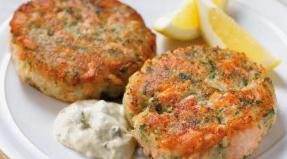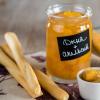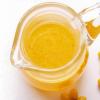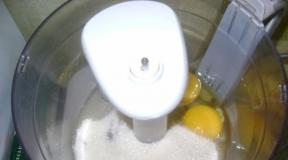How to choose the right ripe mango. Learning how to choose a juicy and ripe mango
“We are attracted by this super-vegetable mango,” the group “Accident” sang in their song “Vegetable Tango”. It's hard to disagree with them: it's hard to resist and not buy at least one tempting bright fruit to try. But how do you choose a delicious ripe fruit?
To begin with, mango, whatever the musicians sang, is not a vegetable, but a fruit, like an avocado. These tasty and fragrant fruits grow on the Indian mangifera tree (mango tree). Their peel is colored red, yellow and green, and the flesh is yellow or orange. Both green and ripe fruits are eaten - both of which have their own beneficial properties.
Skin color can range from yellow-green to deep red. But it is not worth determining ripeness by one color, since the color of the fruit also depends on the variety. the riper the fruit, the brighter and more intense the peel will be colored whatever color it has.
The skin should be smooth, shiny and tight, without defects, a ripe fruit may have small black specks. A wrinkled skin is a sign of an unripe mango, and if an avocado may well ripen at home, then there are few chances for the ripening of mango fruits, although you can try. If the peel is flabby, then the fruit has been on the counter for quite some time.
To choose a mango, it is not enough to look at it - you also need to smell it. Ripe mango fruits have a fragrant resinous odor, strongest at the tail. If the fruit does not have this smell, it means that it has not yet ripened, therefore, most likely, it will turn out to be tasteless. If the smell is sour or gives off alcohol, then the fruit is overripe and stale, its pulp has already begun to ferment.
You also can't pick a mango without touching it. First, take the mango in your hand and estimate its weight: ripe fruit weighs 200-300 g. There are, of course, and one and a half kilogram "giants", but there is no doubt about their ripeness. By the way, juice is usually squeezed out of large mangoes, and smaller varieties are used for food.
Then try to gently squeeze the fruit. When ripe, the mango should be neither too hard nor too soft. The mango should be firm when pressed slightly. There should be no dents or depressions on it, and you should also not take fruits with damp skin.
But the shape of the fruit should not scare you off: the main thing is that the mango is bright, dense and smooth, and the irregular shape has absolutely no effect on its taste... Sometimes the ugliest fruits are the tastiest and most aromatic. The pulp of a ripe mango is fibrous, aromatic, and has a bright yellow or orange color.
It is better to store mangoes not in the refrigerator, but at room temperature.: when stored in this way, the fruits will become softer and more aromatic. But a very ripe mango, like a cut mango, is better to put in the refrigerator. But even there it can be stored for no more than a couple of days: it is better to quickly eat the fruit before it goes bad. Mango is a very delicate fruit that spoils very quickly if damaged.
We hope that our tips on how to choose a mango have helped you. This tasty and healthy fruit can be eaten "neat" or used to prepare a variety of dishes, and not only sweet ones. And when you eat a mango, do not rush to throw away the seed - you can plant it and grow a mango tree at home.
Mango is perhaps the most popular tropical fruit. I don't know a single person who doesn't like good ripe mangoes. They fall in love with everyone who tries them!
Most Frequently Asked Questions About Mango
What does mango taste like??
It doesn't look like anything. It's just the taste of mango, its own special and unique. There are purely sweet varieties, sometimes with sourness. In some varieties of mango, for example, in Thai, there are coniferous mango notes. The mangoes in one country are completely different from the mangoes grown in another country. Even if these neighboring countries are in Southeast Asia.
What is the consistency of mango?
It all depends on the variety. The noblest varieties of mango have a delicate thick texture without fibers at all. Most often, there are fibrous mangoes, the strings of which then get stuck between the teeth so disgustingly. Mangoes are very juicy, their juice just flows down your hands and drips onto your clothes when you eat them. By the way, be careful, mango stains won't wash off! And yet, the mango bone does not separate from the pulp at all, no matter how ripe the fruit is.
What is the scent of mango?
Again, its own unique, mango. However, not all mangoes are flavorful. Filipino mangoes smell very fragrant through the peel, but Thai, Vietnamese and Indonesian are somehow not very special, they may not smell at all, but at the same time be divinely tasty.
How to choose a mango?
The main rule that works for all varieties of mango is that the fruits should be evenly soft, like a ripe pear and. No dents. Smelling varieties of mango should also be identified by aroma - the more aromatic, the tastier, and the aroma should be floral, because sour mangoes can smell strong too. The brighter the rind of the mango, the sweeter the fruit will be. Choose mangoes with red, pink, burgundy casks or tops.
How to peel and eat mangoes?
Here are the 3 easiest and most common ways to peel and eat mangoes, in pictures:



Read about all other ways to peel a mango (detailed instructions).
Is it possible to taste and love mango the first time?
Yes! This is usually the case. Although mango is an exotic fruit, its taste is not very specific, so it is not a repulsive fruit, you do not need to get used to it, like many other tropical fruits.
Where it grows most?
Filipinos are very proud of their mangoes, but they are far behind Indonesian, Thai, Indian and even Vietnamese. Although on the islands of Palawan you can taste very tasty mangoes, but on and in they are more often sour.
Mango season?
In Thailand, the high season for mangoes is in the spring.
In Indonesia, Bali - from October to January. White mango vani have a season from December to March.
In Vietnam in winter and spring.
In other countries, spring is most common, but the season may vary slightly depending on the weather.
Calorie content of mango?
In terms of nutritional value and satiety, mango is about the same as persimmon. 60 kcal per 100 grams. Although mangoes are juicier than persimmons, both fruits give the same satiety.
What effect it has on the body?
The mango is absorbed and digested perfectly, and also energizes. Although if you eat too much mango, then on the contrary, you may feel a slight decrease in energy.
Varieties and types of mango
There are almost countless varieties of mangoes. Each tropical country grows its own mangoes, its own specialty varieties and flavors. Mangoes come in yellow, orange, green and red peels; with white, yellow, orange pulp; from 100 grams to a kilogram in weight; delicate almost creamy and fibrous; etc. etc. I suggest you familiarize yourself with the varieties of mango in different countries of the homeland of this fruit:


Amazing Thai Mango Varieties (Lin Ngu):


Green Thai mangoes (Flaran cultivar):

Other green mangoes from Thailand:

Different varieties of mango in Vietnam:



Filipino Mangoes:





In the Philippines, you can find both incredibly large and surprisingly tiny mangoes. Here's how they compare to classic sized mangoes:



The most wonderful, amazingly delicious mangoes from Bali:

Chinese mangoes:

Brazilian mangoes:

Peeled mangoes:

Mango record holder:

And these are those divinely delicious white mangoes called vani or binjai. They are very, very, very fragrant and have the taste of luxury ice cream.



White mango vani are also available with dark peel:

Mango is a fruit from hot countries that has long appeared on store shelves, but, unfortunately, our compatriots did not like bananas or pineapples. Perhaps, after reading the article, many will reconsider their attitude towards exotic fruits, appreciate their benefits and taste.
These are very beautiful shady trees that are often used in tropical landscaping. If the plant receives enough heat and light, then it grows with a large beautiful rounded crown up to 20 meters in height. To provide constant access to moisture, its roots grow 6 meters deep into the ground. There are individual specimens of trees that live for about 300 years and continue to produce crops every year.
Mango leaves with prominent veins are dark green on top and lighter in color on the back. The flowers of the plant are very small, red or yellow, collected in panicles up to 2000 pieces each. The size, color and shape of the fruit depends on the particular variety.
The homeland of mango is Burma and East India, but now the plant is widespread in other warm corners of our planet. These are Malaysia, East Asia and Africa, Thailand, Pakistan, Mexico, Spain, Australia.
Varieties and types
There are over three hundred varieties of the fruit.

The most common:
- Kaen Oan (pink-orange mango). The thin skin of its fruit is orange in color with a delicate pink tint. The weight of the largest fruit of this variety rarely exceeds 250 grams.
- Pimsean (pink-green mango) is a rare variety that is considered one of the best. Its fruits weigh 350-450 g.
- GaewLek (small green mango) is a mango variety with the smallest fruits (up to 200 g).
- Keo-Sa-Woei (dark green). The darker its fruits become, the more ripe the pulp.
- Nam-Doc-Mai (classic yellow mango) is the most popular variety, with a medium fruit that can weigh up to 500g.
There are as many varieties of mango as there are varieties of apples, so it is difficult to determine in all this diversity which one is tastier, but there is also a positive point - everyone can find a mango to taste.
What is the difference between green and yellow mango?

The green and yellow color of the mango fruit is the main difference between the two varieties of exotic fruit. So, fruits with a bright color have the correct shape and belong to the varieties of the Indian variety. Another variety with elongated green fruits is the Filipino or South Asian mango, whose plants are less susceptible to sudden fluctuations in climatic conditions.
What does the fruit taste like?

Ripe mango has a sweet fruity taste with a subtle sourness, in which notes of apricot, melon and peach are guessed. The color of the flesh can vary from yellow to orange. Its peculiarity is the small presence of hard fibers, they are especially noticeable if the plant grew near a source of hard water, or was treated with chemical fertilizers. The lower the fiber content in the pulp, the higher the quality of the fruit.
Composition, calorie content and nutritional value
Mango pulp is rich in vitamins, minerals and essential amino acids, which the human body is not able to produce on its own.

The vitamin composition of this exotic fruit is as follows: vitamins A, B1, B2, PP and C. Among the minerals that are abundant in mango pulp are copper, sodium, potassium, calcium, magnesium, phosphorus and iron. Due to this, regular consumption of the fruit has a positive effect on the body's immune system and hematopoiesis processes.
As for the nutritional value of mango, in a percentage ratio of 100 g of the edible part of the fruit, 82.2% consists of water, 1.6% is dietary fiber, 15% carbohydrates (sucrose, fructose, xylose and glucose), 0.4% - fats and 0.8% proteins.
The calorie content of ripe mango, depending on the variety, can range from 65 to 70 kcal / 100 g.
Mango: benefits and harms to the human body

The Asian apple, as the mango is also called, has unique beneficial properties, as it is the first fruit in the world that can stop the division of cancer cells and the infection of healthy tissues. But it is not a panacea and is used as an additional source of vitamins.
The beneficial properties of mango are manifested in helping the nervous system, helping to cope with stressful situations, slowing down the aging of skin cells, cleansing the walls of blood vessels, protecting against atherosclerosis and other joint diseases, restoring the body's water balance.
In addition to a positive effect on the human body, this fruit can also cause harm. Most often it is caused by its excessive use. Since mango contains a lot of sucrose and glucose, people with diabetes need to be very careful when using this product.
How to determine the ripeness of a fruit?

When determining ripeness, do not rely too much on the appearance of the fruit; more attention should be paid to other signs:
- Place near the stalk. In an unripe fruit, the end of the stalk is lowered down, since the pulp has not yet become sugar-filled. In ripe mangoes, the place at the stalk is round and poured, and the stalk itself is slightly raised up.
- Aroma. Regardless of the variety, ripe mangoes have a very bright, strongly pronounced sweet fruity aroma. It is felt especially strongly if the fruit is sniffed closer to the stalk. You shouldn't buy odorless or alcoholic mangoes. These fruits are either unripe or already spoiled.
- Weight. Ripe, poured mangoes weigh much more than unripe ones. Therefore, putting the fruit in the palm of your hand, it is worth weighing it, as it were. If it turns out to be actually heavier than it looks, then the fruit is definitely ripe.
Mango fruit: how to peel properly?

Mango peel is too tough and dense, with a specific taste. These properties make it possible to transport exotic fruit anywhere in the world without fear of spoiling its presentation, but it is preferable to peel the peel and eat only the pulp. Doing this should be done with gloves and with extreme caution so as not to get dirty or splash your clothes.
Let's take a look at the main ways to peel mangoes:
- Peel off the mango peel with a sharp knife, like an apple, pear or potato. Carefully cut the fruit lengthwise with a knife to the bone, separate the pulp from the bone with rotating movements. Then use as directed.
- Cut the fruit with a knife to the bone, twisting the halves in a circle, separate them from the bone. Next, make cross-shaped cuts in the pulp without cutting through the rind. Unscrew each slice with a "hedgehog" and carefully cut the pulp over a plate with a knife.
- Overripe mango, after separation from the seed, can simply be separated from the peel with a small spoon. The juice that is released during this can either be used to prepare various desserts or just drink.
- Ripe, but not too soft, the fruit is peeled with a potato peeler. Then cut into small slices, which are separated from the bone with a knife. This method is suitable for peeling fruits, which will then be used for mashed potatoes or other dishes.
How to Eat Mangoes?
Raw
It is better to eat peeled mango pulp raw, so the body will receive absolutely all the nutrients. It is often recommended to chill the fruit a little before serving in order to soften the characteristic oily aftertaste.

In its raw form, mangoes can be eaten not only cut into slices or cubes, but also chopped in mashed potatoes. This will require a blender and a few minutes of extra time. Children will especially like this way of serving.
Mango recipes
It can be used to prepare a variety of delicious meals and drinks.

On a hot summer day, children and adults will be delighted with mango sorbet, which will require:
- 2 medium-sized mangoes;
- juice of one orange;
- ½ lemon juice;
- 120 g sugar;
- 50 ml of water;
- 20 g corn (or potato) starch.
How to cook:
- Puree the mango pulp and refrigerate.
- Mix orange and lemon juice with sugar and bring to a boil, dissolve the starch in cold water and pour it into the juice, brew the mixture until thickened.
- Mix completely cooled citrus mixture and mango puree, freeze sorbet in the freezer or ice cream maker.
A variation of a hearty and delicious mango snack drink - a nutritious smoothie.

To prepare it, you need to take:
- 1 mango;
- 1 banana;
- 500 ml orange juice;
- 100 ml of natural yoghurt.
Progress:
- Put the mango and banana pulp into the blender bowl, pour in the juice and yogurt. Kill all the ingredients until smooth.
- Pour the smoothie into a tall glass, add some ice and serve with a cocktail tube.
Mangoes during pregnancy and breastfeeding: yes or no?
In tropical countries, mangoes are as common as apples in our countries, so for many pregnant women and nursing mothers, this fruit is a common food. The beneficial substances contained in it are so harmless to the human body that mango is recommended even as the first complementary food.

But still, if a woman did not eat this exotic fruit before pregnancy and lactation, it is worthwhile to eat it with caution, monitoring the likely manifestations of allergic reactions in the mother and child. If a rash or other skin reactions, critical changes in stool appear, immediately exclude this product from the diet.
Can you eat mango peels?

An exotic plant for our latitudes - mango is one of the distant relatives of poison ivy. This fact explains that in its peel, although in a small amount, a poisonous substance is contained - the toxic resin of urushiol. It can provoke allergic reactions and upset the digestive system, so you should not eat mango peels.
How to ripen a fetus at home?

Having bought an unripe mango fruit, you should not be upset, since there are several ways to get an absolutely ripe fruit in a time from 6-12 hours to 2-4 days, depending on the method chosen:
- In a paper roll or newspaper. To ripen the mango in this way, you need to pack an unripe tropical fruit and a ripe apple in a paper bag or newspaper bag. Leave at room temperature for one to two days. The mango will fully ripen due to the release of ethylene from the ripe apple.
- In grains of rice or corn. The principle of ripening the fruit is similar to the previous one, but was invented by Indian and Mexican housewives, who put unripe mangoes in a container with grains of rice and corn. The fruit can be ripe after 6 hours.
- In a container at room temperature. This is the most natural way, but it takes the most time - up to three to four days.
Mango oil: application in cosmetology
The juicy pulp of the mango is eaten, and the essential mango oil is obtained from the seeds. It belongs to solid vegetable oils and at room temperature its consistency resembles the well-known butter. Mango seed oil does not have any pronounced aroma, and its color can be white, light yellow or cream.

Its main cosmetic application is daily care of the face and body skin, as well as hair and nails. The oil is ideal for skin of any oiliness and age. In cosmetology, it is used as part of massage mixtures, mixed in equal proportions with face and body creams, means before and after sunburn, hair balms or rubbed into nail plates.
Before I learned to determine what kind of mango I would like to taste, I had to make mistakes more than once and buy absolutely unripe fruits. There is a myth that the redder the mango, the more likely it is ripe. But this is nothing more than a myth and has proven to be ineffective in practice. In this article, I will explain how I usually choose mangoes, and how to check mango for ripeness.
How to check a mango for ripeness?
The ripeness of a mango is determined by a combination of several characteristics.The ripeness of a mango is determined by a combination of several signs, in no case, when choosing a mango, you should not be guided by only one sign.
Mango appearance.
First of all, check how attractive the exotic fruit looks. Ripe fruit usually has 3 colors, smoothly flowing into each other: green, red and yellow-orange. Colors are bright, not washed out. The peel is smooth and pleasant to the touch - it shines. The shape of the mango should be oval - elongated, I do not advise buying deformed fruits. It is best if dark spots are visible on the fruit - they indicate the ripeness of the mango.
And what kind of mango does it feel?
Don't be afraid to press lightly on the fruit.The second sign that you should pay attention to is the structure of the fetus. To select a ripe mango, it is not enough to look at it, you also need to touch it. Don't be afraid to press lightly on the fruit. If there is a small dent left, this is a good sign, then the flesh under the skin is soft, and the fruit is ripe. If the skin breaks with pressure, do not take such a fruit, it is overripe and, most likely, has already begun to deteriorate. If the mango is completely hard and does not squeeze, I also do not advise you to take it - it is not ripe and but it may ripen on a sunny windowsill after a couple of days.
Important! If you take mango with the expectation of eating it at a later date, then I advise you to choose a harder fruit and store it in the refrigerator.
Oh, what a scent!
The final touch remains - smell the selected fruit.You have checked the first two signs and are practically determined with the choice. Wonderful! The final touch remains - smell the selected fruit. Ripe mango smells very appetizing, and its smell intensifies to the tail. The smell is very sweet, and it contains notes of spruce needles. Unripe fruits, as a rule, practically do not smell. But overripe ones have not a sweet, but a sour smell. When I first bought a mango to try, peeling the mango, I felt a carrot scent. And it still seems to me that the mango smells like carrots, but this is just my subjective opinion.
How ripe mango tastes?
Mango flavor is a cross between peach, apricot and melon.Ripe mango has a bright yellow, almost orange flesh, soft and fibrous in structure, which is easily separated from the stone. By the way,
Mango fruit, exotic for us, is one of the most widespread in Southeast Asia. Its fruits are sold in local markets, in supermarkets, or just along the road in cars. But all this exoticism can be seen only during the period of its mass maturation. The name mango in translation means "great fruit", which is why you can often hear that the locals call him "Fruit King".
Mango is an evergreen tree, which sometimes reaches 40 meters in height. But modern breeders have bred dwarf breeds, which is very convenient for those who grow this fruit on an industrial scale.
At a young age, the leaves of the tree are colored reddish, but over time, the older the plant, the stronger the rich green color will appear.
During flowering, the crown is covered with small yellow flowers. There are several varieties of mango, each with a different color and size of the fruit itself. And some are even prone to self-pollination. Fruits are not set if the tree grows in inappropriate climatic conditions. The night air temperature should be above 13 degrees. Mango does not like high levels of humidity, for fruitful growth there must be fresh air and enough light. That is why they try to plant the plant in an open area.

What does a mango look like?
Mango fruits can be yellow, green, orange, red. In shape, they resemble a slightly elongated egg-shaped structure. Average weight ranges from 200-250 grams. But quite often you can find fruits that weigh up to 400-500 grams, and up to 1.5 kilograms are considered real record holders.
The mango skin is quite dense and smooth. The pulp is fibrous with a sweet taste. Inside there is a large bone of a light yellow hue, slightly flattened on both sides.
When is the mango season in Thailand?
Mango is one of the most delicious fruits in Thailand. The country's climate is perfect for the ripening of this tropical delicacy. I just want to draw your attention to the fact that the fruit season is very short and lasts only from April to May. It was at this time that all the markets of the country are overflowing with yellow fruits, and the price for 1 kilogram drops to 15-20 baht.
Mango flavor
To taste the real taste of mango, you need to find a fruit that is ripe on the tree. The fruits purchased from our store will have slightly different taste qualities, since they are picked while still green. Thai mango has a special flavor, reminiscent of a combination of ripe pineapple and peach. Its pulp just melts in your mouth. A piece eaten is able to quench thirst, fill the body with freshness and coolness, and at the same time awaken the appetite. More subtle gourmets generally find it difficult to compare its taste with any fruit we know.

Useful properties of mango
You can talk about the beneficial properties of mango for hours. There are really a lot of benefits from it, which is why we will try to highlight the most basic points:
- First of all, it is the main "supplier" of ascorbic acid. It contains several times more vitamin C than lemons. Thanks to this feature, the fruit is recommended to be eaten for colds.
- Mango is able to positively affect human bone tissue and at the same time accelerates the wound healing process.
- Mango fruits can lower blood cholesterol levels.
- During the experiment, American scientists found that the fruit accelerates the excretion of sugar from the human body. Thanks to such features, the fruit should be eaten by those who have diabetes mellitus or have a tendency to be overweight.
- The fruits have no less effect on the cardiovascular system. The components that they contain are able to strengthen blood vessels, and also facilitate the course of inflammation and allergies.
- Due to the fact that mangoes contain large amounts of vitamins A and C, it is much easier for the body to endure colds. If the body lacks vitamin A, then this can affect the quality of vision in the evening.
- The components of mango are capable of destroying free radicals that negatively affect brain cells. It can also serve as the prevention of cancer, namely breast and prostate cancer.
- Due to its high potassium content, the fruit is able to regulate blood pressure, as well as maintain electrolyte, water and acid-base balance.
- The high fiber content improves the functioning of the digestive system, normalizes the intestinal microflora and removes all toxins from the body.
- Vitamin B6 is able to cope with stressful situations. Regular consumption of the fruit helps to calm down and improve the health of the nervous system.
Mango is also a dietary product, it is able to improve metabolic processes and accelerate the excretion of fluid by the body.
Mango harm
Despite such a huge list of the beneficial qualities of mango, there is still a group of people who should be careful when consuming this fruit:
- It is not advisable to eat it for children under the age of 3 years. The thing is that mango is an exotic fruit that is practically not represented in our countries. It is not known how the child's body can react to the introduction of a new product.
- After you have eaten a piece of fruit, try to exclude alcohol for at least 2-3 hours.
- Mango is contraindicated for owners of sensitive mucous membranes.
- Those who are prone to allergic reactions also need to be careful.

How to choose the right mango?
Picking a ripe mango can sometimes seem like a daunting task. Due to the rich color gamut, the exact characteristics of the appearance simply do not exist. But still, there are several rules that you should pay attention to when buying mango fruits:
- When ripe, the skin should be smooth, shiny and beautiful. The presence of small brown blotches will also indicate the maturity of the fruit.
- The fruit is quite dense and heavy to the touch. Pressing lightly on it, a small dent should form, which almost immediately levels out. Too soft fruits will indicate that they begin to deteriorate inside.
- If the mango is overripe, then its peel will be flabby with numerous deep wrinkles.
- The aroma of the ripe fruit is pleasant and delicate with a sweet touch. Alcoholic notes and the presence of acid in the smell will indicate that the fruit is spoiling.
- If you buy fruits that are too green, you are unlikely to be able to bring them to a ripe state at home.
How to store mangoes?
You can store mangoes both in the refrigerator and at room temperature. It all depends on the quality of the fruit you have acquired. If the fruit is slightly greenish, it is best to leave it in the room. If you have purchased ripe fruits, then for their safety it is advisable to use the refrigerator compartment. Those who want to keep the tasty pulp for several months should place the fruit in the freezer.
There are several ways to peel a mango:
The easiest way is to take a sharp knife and carefully peel the skin off the fruit. Then separate the pulp from the stone and cut it into small pieces. It should be borne in mind that the fruits are quite juicy and during such cleaning with juice you can stain your hands or clothes.

The second method will be more aesthetic. With the help of a knife, halves of the fruit are cut along the stone. Then cuts are made on them crosswise. At the same time, the integrity of the skin should be preserved. Turn the halves inside out slightly and use a knife to cut off the resulting diamonds.

If the mango is slightly overripe, then it can be cut into two halves, and the pulp can be eaten with a spoon.

Mango is truly recognized as one of the most delicious fruits, which is also rich in various vitamins and minerals. You can feel the real taste and aroma of fruits only when traveling to tropical countries. That is why try to choose the right time of rest so that the trip will be remembered not only by swimming in the sea, but also by acquaintance with new fruits.



















